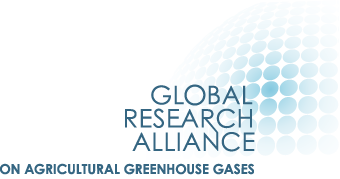Keywords: Uncertainty analysis | Monte Carlo analysis | sensitivity analysis
What data needs were addressed? To understand the contribution of key factors to inventory uncertainty and provide an improved estimate of overall uncertainty of the livestock inventory.
Why was the data needed? Until 2013, uncertainty of livestock emission sources in Canada’s inventory was estimated using default estimates of uncertainty from the IPCC. An improved estimate of uncertainty was needed for the inventory based on the actual data used in the inventory.
Methods used: Monte Carlo analysis, sensitivity analysis.
How was the data need addressed? A study published in 2012 (Karimi-Zindashty et al. 2012) applied Monte Carlo methods to methane emissions from the Canadian inventory, estimating uncertainty of 38% for enteric fermentation and 73% for methane emissions from manure management. That study identified the methane conversion rate (Ym), the coefficient for calculating net energy for maintenance (Cfi) and the methane conversion factor (MCF) which all used the IPCC default values as the greatest sources of uncertainty. It also highlighted that assigning uncertainty values to regional (provincial) parameters would reduce the uncertainty significantly.
For the national inventory, methods based on those used in the 2012 study were applied, but using the actual parameter values and equations used in the inventory. The inventory uncertainty analysis also assessed the uncertainty associated with the duration of different production stages for beef cattle that are defined in the Canadian inventory, and used the provincial distribution of manure management systems with improved estimates of probability distributions. The analysis was run for 1990, 2005, 2010 and 2012, and trend analysis was carried out to establish the uncertainty in the estimate of the differences in emissions from 1990 to 2012.
The results showed that the uncertainty of enteric fermentation emissions was 39%-40% in different years, and mostly due to cattle emissions, since these are the largest emission source. Trend analysis suggests that emissions of methane increased between the 1990 base year and 2012 by 9 to 19%, with a most likely value of 15% (trend uncertainty 10%), mostly due to enteric fermentation. Similar to the findings from Karimi-Zindashty et al. (2012), the inventory analysis of uncertatiny suggests that the IPCC default parameters (i.e., the methane conversion rate (Ym) and the factor associated with the net energy of maintenance (Cfi) contribute most significantly to uncertainty. These parameters are applied at the national scale, so uncertainty might be reduced by developing parameter values at the regional scale for different animal categories.
Further Resources
Karimi-Zindashty Y, et al. 2012. Sources of uncertainty in the IPCC Tier 2 Canadian livestock model. The Journal of Agricultural Science.
Author: Andreas Wilkes, Values for development Ltd (2019)

